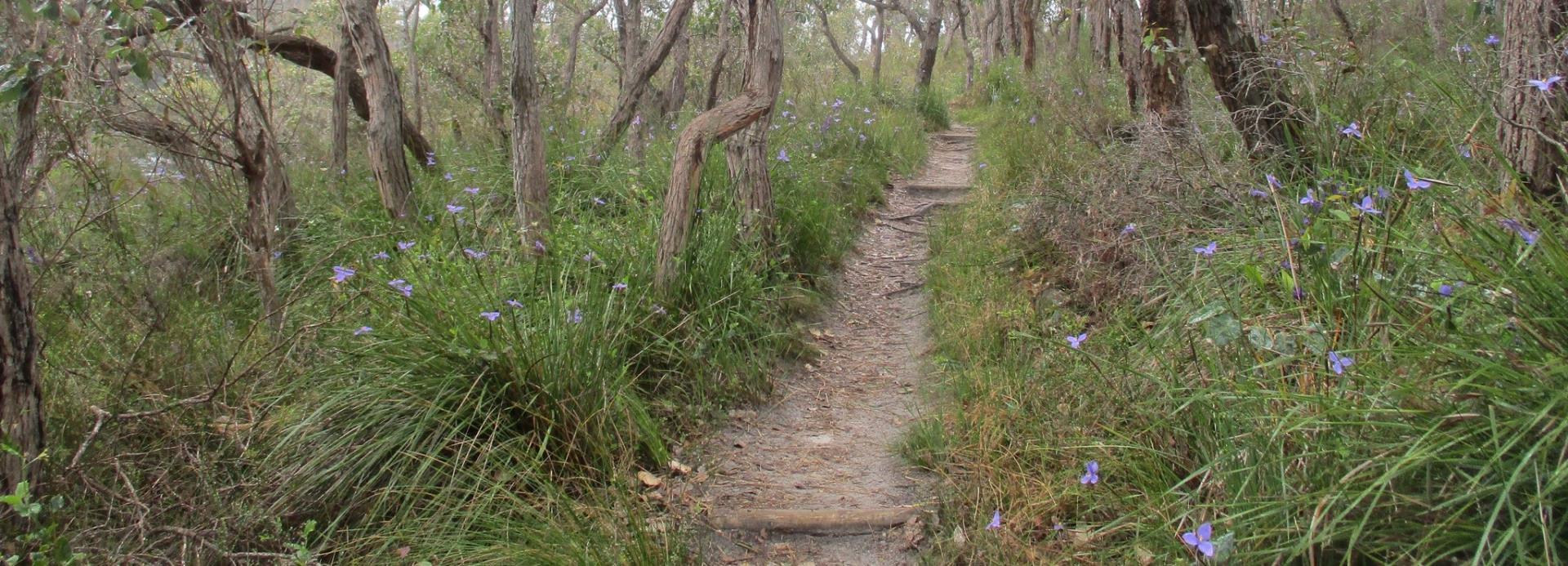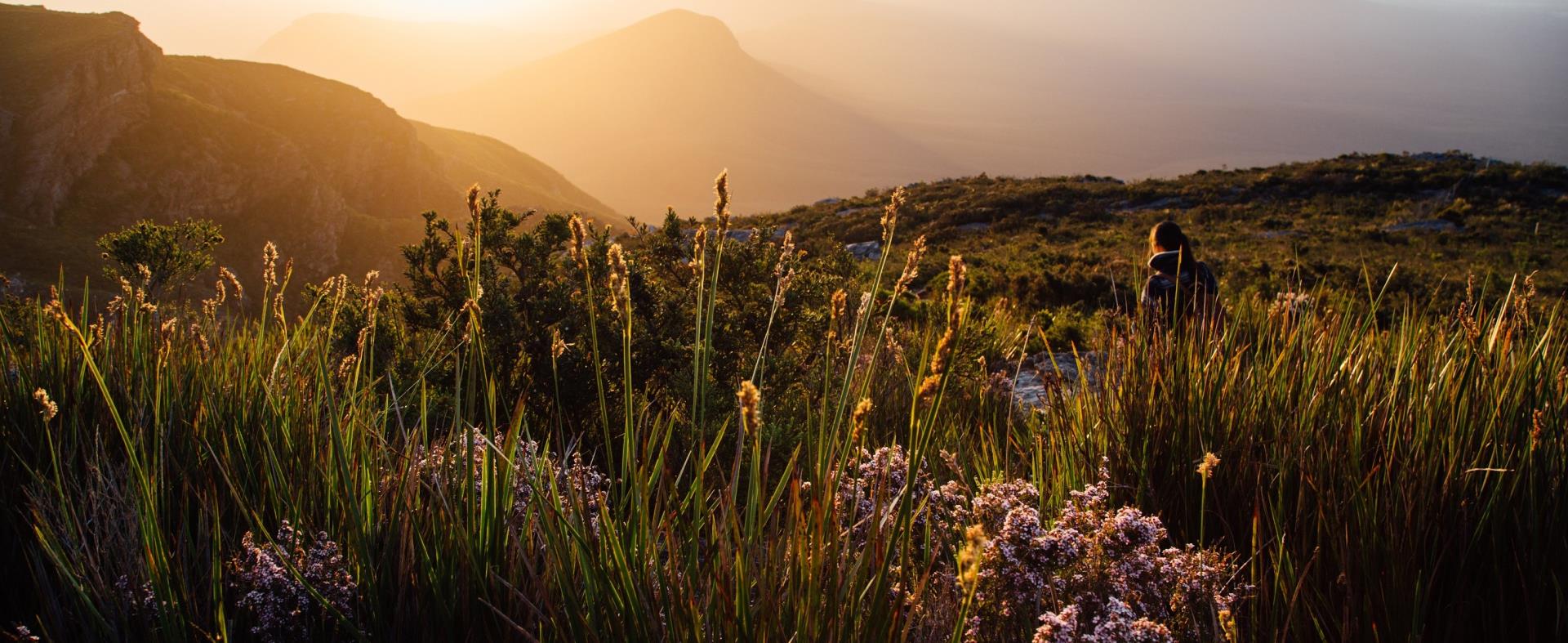
Experience Wildflowers in Albany
An astounding 60 per cent of Western Australia’s wildflowers are found nowhere else on earth. Albany and the South Coast displays a rich diversity of many of those species, making it something of a nature gallery for rare and unusual floral species.
Each year, the region blooms with spectacular wildflower displays between late August and December, ranging from rare orchids and carnivorous plants to vivid ground covers and delicate mountain bells. The annual Bloom Festival takes places across the region every September-October, with a range of guided tours and special events throughout the month. The 2024 Bloom Festival program can be viewed here.
The South Coast region boasts over half of Western Australia's 13,000 plant species, with some so rare that they are only found in a few places in the world. This includes the endangered Granite Spider Orchid and the Queen of Sheba.
Finding Wildflowers in Albany
Finding wildflowers in Albany and the surrounding area is accessible to everyone, whether you are searching for the rare and exotic or just looking to enjoy being outdoors while looking for these seasonal blooms.
Remember to follow these simple guidelines and you are sure to enjoy your time spotting wildflowers in Albany.
- Bring your camera and take nothing but photos. Picking wildflowers or removing seeds or pods is illegal and there are penalties up to $2000.
- Stay on clearly defined trails to avoid spreading weeds and disease. For more information on Dieback, visit the Department of Biodiversity, Conservation and Attractions Site.
- Step lightly to avoid damaging delicate plants or leaves that have not yet developed into an orchid.
Visit the Albany Visitor Centre or call us on 6820 3700 for maps and trail information and pick up a copy of our 10 Greats Walks brochure.
Alternatively, guided wildflower walks are available during September and October at Mt Trio Bush Camp.
Wildflower Hot Spots Around Albany

Central Albany
Ellen Cove Boardwalk
Spectacular views of King George Sound and Middleton Bay. Coastal heath & open scrub dominated by peppermint woodland interspersed with jarrah forest and coastal banksia species.
Mount Adelaide & Mount Clarence
Each mount has a 3km circuit. Jarrah and banksia woodland interspersed by granite outcrops harbouring a range of herbaceous species.
Mount Melville Nature Trails
Jarrah and banksia woodland interspersed by granite outcrops harbouring a range of herbaceous species.

South of Albany
Albany Windfarm
Coastal Heath, predominantly peppermint forest and Albany Woollybush, with colourful sprays of hibbertia, pimelia and hakea. There are short walking tracks amongst the turbines or the coastal trail is part of the Bibbulmun track.
Torndirrup National Park
Home to a diverse floral habitat, the heath lands put on a colourful display of wildflowers in spring, including Albany Woollybush & the pungent Sticky Tailflower. Peppermint woodlands grow throughout the park.
Walks within the park include:
- Stony Hill Heritage Trail: An easy 400m loop around the highest point in the park.
- Peak Head Trail: Approximately 2hrs return walk through rugged coastal heathland. (10 great walks link)
- Isthmus Hill and Bald Head Trail: A strenuous walk with great rewards. If you don’t have time for the entire walk, the first half of the trail offers banksias, wildflowers, orchids and fabulous views. (10 great walks link)
Uredale Point
Uredale Point Heritage Trail is a moderate walk which begins at the Whalers Cove car park on Quaranup Road. This area has an abundance of wildflowers and beautiful views over Whalers Cove, Princess Royal Harbour and King George Sound.

East of Albany
Kalgan River
Luke Penn Trail is an easy walk along banks of the Kalgan River. A mix of vegetation from large marri trees, eucalypt bushland and farming pastures.
Gull Rock National Park & the Mount Martin Botanical Reserve
The Gull Rock National Park is home to an extensive range of wildflowers, orchids and Albany’s iconic Scarlet Banksia (Banksia Coccinea).
Mount Martin Trail starts from the Ledge Beach carpark, this trail offers walking loops of various lengths and an incredible array of wildflowers, including the Banksia Coccinea and Dryandra Formosa.
Two Peoples Bay Nature Reserve
This area has an abundance of wildflowers, with many just along the roadside or on the 5km return Heritage trail from Two Peoples Bay car park to Little Beach.

West of Albany
Bibbulmun Track
Walk one of Australia’s longest bushwalks! Stretching 1005km from Perth to Albany, the southern section is a must for wildflowers. There are a number of day walk sections, easily accessible from Albany, which offer spectacular views and wildflower opportunities.
Car access points for walks are :
- Muttonbird Beach carpark to Albany Windfarm, 13km one way
- Frenchman Bay Rd (corner of Bayview Dr) to Sandpatch Campsite, 5km one way
- Cosy Corner to Shelley Beach Lookout, 7km one way
- Lowlands Beach to West Cape Howe hut, 5km one way
For more information on the Bibbulmun Track click here https://www.bibbulmuntrack.org.au/the-track/along-the-track/denmark-albany/

North of Albany
Porongurup National Park
The Porongurup National Park has over 750 plant species including 55 different species of orchid and a unique stand of Karri forest, also an abundance of birds & wildlife. Wildflower walks include:
- Castle Rock & The Granite Skywalk: a challenging 4km return hike offering spectacular views.
- Waliti Meil Walk Trail: a 1km walk starting from the Castle Rock car park.
Twin Creeks Conservation Reserve
Located between the Porongurup and Stirling Range National Parks, Twin Creeks has a spectacular diversity of plants which are accessible via several short walk trails.
Stirling Range National Park
With over 1500 species of plants with over 100 that are unique to the area, the Stirling Range National Park is a must-do for wildflower lovers. You don't have to venture too far off the track to find orchids and wildflowers, as orchids grow along the side of the road and along with fire breaks.
There are numerous hiking trails within the park, or for a flat walk over easy terrain, the Ongarup Creek Walk (accessed from Bluff Knoll Road near the park entry pay station) is a great option.
Guided Wildflower Orchid Walks are available from Mt Trio Bush Camp
https://mttrio.com.au/#wildflowers
The Bloom Festival
Held in September and October, the Great Southern Treasures signature annual event offers events and activities that celebrate “everything that blooms”.
www.greatsoutherntreasures.com.au/bloom/